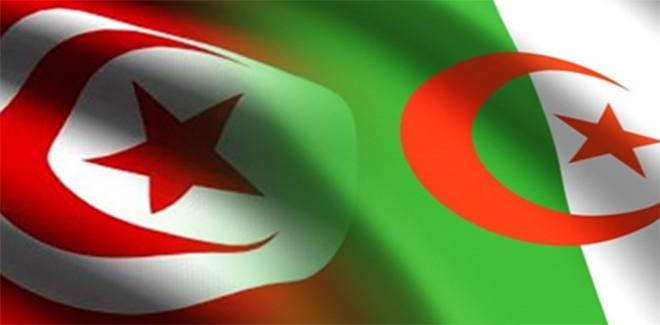
2023 marks the thirteenth anniversary of the outbreak of the Arab Spring in the Maghreb and Middle Eastern countries. This popular movement for the democratization of Arab countries provoked a political earthquake in many of these states, leaving a certain stir among the Arab population today. Despite the movement’s magnitude, the Gulf monarchies did not give in, while some countries like Libya or Syria plunged into the throes of civil war. Only one country truly succeeded in its democratic moult to become a model for the Arab world: Tunisia.
However, under the impetus of current president Kais Saied, Tunisia underwent a constitutional reform in July 2022, which introduced a hyper-presidentialism verging on autocracy. In neighboring Algeria, while the Arab Spring had given rise to a series of protests throughout the 2010s, the people had finally won when Abdelaziz Bouteflika, head of state since 1999, resigned in 2019 under the momentum of Hirak, a pacifist movement of unprecedented popular protest. Yet again, the hope of a democratic renewal was swept away by the repression of the regime of Abdelmadjid Tebboune, elected in 2019. So how could the two countries fall back into the throes of authoritarianism when their people finally seemed to have gained democratic certainties?
Tunisia’s democratic success in distress
Born in 2010 from the first revolt of the Arab Spring, the Tunisian democracy has faltered since July 2021 and the coup de force of President Kais Saied. Brought to power by a landslide victory in the 2019 presidential elections, the head of State, in accordance with the Constitution, had to leave the choice of the government to the Ennhada party, the winner of the legislative elections. But political tensions quickly arose between Saied, an independent newcomer to politics, and the conservative Islamists of Ennahda.
With the political crisis escalating in the summer of 2021, Kais Saied took advantage of the sanitary confusion to grant himself full constitutional powers. As he dismissed many members of the government and dissolved parliament, the opposition immediately denounced a coup. The authoritarian turn reached a higher stage in July 2022 when Saied proposed a constitutional reform strengthening the executive. Adopted by referendum, only 25% of registered voters participated, the rest having massively boycotted the initiative.
Following this event, the demonstrations resumed in earnest, coupled with a wave of indignation following the president’s racist comments that black African immigration would serve to change the demographic composition of the country. Romdhane Ben Amor, the spokesperson for the Tunisian Forum for Economic and Social Rights, analyzes these statements as an attempt by Saied to deflect popular anger into new scapegoats.
In Algeria, the street’s distrust towards the State
In Algeria, Bouteflika’s announcement to run for the 2019 presidential election caused an uproar among the population. Elected in dubious circumstances in the midst of the Algerian civil war (1990-2002), his public appearances had sharply decreased following an illness contracted in 2013. His close ties to the military combined with unpopular constitutional reforms added to the ever-widening gap between the Algerian population and its government.
The 2019 election was thus meant to be an opportunity for the Algerian people to elect a candidate breaking with the old political class. Abdelmadjid Tebboune, a senior career civil servant, claimed this posture of “people’s candidate” by presenting an independent candidacy and promising a reform of the constitution to establish a “true democracy”. However, the one who was portrayed as the “army’s candidate” by the Hirak demonstrators did not manage to appease the streets once elected given the weakness of his constitutional reform, which did not question the hyper-presidential nature of the Algerian regime.
The COVID crisis was going to give reason to the fears of the demonstrators. Tebboune used the health pretext to engage repression policies and thus prohibit any gathering, whatever its motive. Amnesty International was quick to denounce these actions, mentioning the acceleration of prosecutions and trials against activists and journalists of the Hirak movement. While many have chosen to flee the country, Tebboune could count on his new Tunisian ally to apprehend the discordant voices that have chosen Tunisia as their point of escape.
Algeria-Tunisia: the convergence of authoritarian regimes
Indeed, in an increasingly threatening regional context, Algeria has seriously warmed up its relations with Said’s regime over the past few years. Resolutely anti-Israel, Algiers has been caught in a stranglehold to the east and west since Egypt and Morocco have recently begun normalizing their relations with the Hebrew state. To stem the rising influence of the Israelis in the Maghreb, Tebboune found in Tunisia the means to reaffirm Algeria’s position of strength in regional geopolitics. Using different means of pressure – such as its gas exports, which represent 63% of Tunisia’s national consumption – Algiers was easily able to curry favor with Tunis.
While Algeria initially drew closer to Tunisia to combat the growing influence of Israel in the region, this proximity now allows Tebboune’s regime to stifle the protest movement, even abroad. The rapprochement of two increasingly authoritarian regimes is alarming for the democratic opening of the region at a time when the COVID crisis has never allowed so many authoritarian regimes to tighten their grip on their population under the pretext of health security. As their respective populations no longer participate in elections, which are reaching abstention records in both countries, and while state repression intensifies, opponents increasingly seem to believe that only popular unrest will bring about radical change, as the Arab Spring made possible a decade ago.
Edited by Marine Matsumura
The opinions expressed in this article are solely those of the author and they do not reflect the position of the McGill Journal of Political Studies or the Political Science Students’ Association.
Featured image by Ramzi Selmi obtained via Flickr.